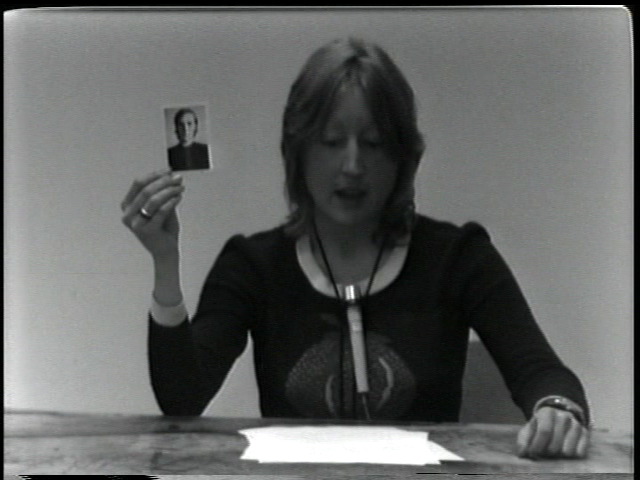Curated by Lauren Fournier
This program was available for online viewing Nov. 20, 2018-Feb. 28, 2019.
Evan Tyler, fear, irony, and curating in the 90s, 2011, 04:35, colour and sound (English)
Andrew James Paterson, The Walking Philosopher, 2001, 03:30, b&w and sound (English)
Hiba Ali, Postcolonial Language, 2016, 25:00, colour and sound (English)
Thirza Cuthand, Lessons In Baby Dyke Theory, 1995, 03:00, colour and sound (English)
Madelyne Beckles, Theory of the Young Girl, 2017, 04:21, colour and sound (English)
Deirdre Logue and Allyson Mitchell, Hers is Still a Dank Cave: Crawling Toward a Queer Horizon, 2016, 24:32 colour and sound (English)
Martha Wilson, Art Sucks, 1972, 01:25, b&w and sound (English)
Autotheory bridges Lauren Fournier’s immersion in Vtape’s video art holdings with her doctoral dissertation research on “autotheory” as a post-1960s feminist practice across media. While doing an internship at Vtape Lauren was able to conduct her research on-site, viewing many works to put together her program which screened in May 2018.
On November 20, 2018, Autotheory was made available on the Vtape website for a three-month extended exhibition, as Vtape’s newest audience outreach project. Back by popular demand… gives audiences around the world a chance to see some of the beautifully guest-curated programs that we regularly present at Vtape.
Autotheory bridges my immersion in Vtape’s video art holdings with my doctoral dissertation research on “autotheory” as a post-1960s feminist practice across media. “Autotheory” is a term that has emerged to describe contemporary works of literature, art, and art writing that integrate autobiography and other explicitly subjective and embodied modes with discourses of philosophy and theory in ways that transgress genre conventions and disciplinary boundaries. Auto-theory is an emergent term, one which began to trend after the publication of Maggie Nelson’s 2015 book The Argonauts, where Nelson, riffing on Paul B. Preciado’s use of the term “auto-theory” in Testo Junkie, inscribed a particularly performative mode of citation alongside a kind of post-memoir, queer feminist life writing text. And yet, auto-theory as an impulse can also be traced through earlier feminist performance art, body art, and conceptual art practices, as well as intersectional feminist writings by women of colour like Gloria E. Anzaldúa, Cherríe Moraga, and Audre Lorde. One could argue that the entire history of feminist theory and practice is one of auto-theory, though the resonances of “auto-theory” as a twenty-first century term bears consideration, particularly when it comes to the twenty-first century context of neoliberalism, late capitalism, and the post-confessional technologies of social media. I approach auto-theory as a practice of performing, embodying, enacting, processing, metabolizing, and reiterating philosophy, theory, and art criticism. With this screening, Autotheory takes performance for video as a ripe space to reflect on the aesthetics, politics, and ethics of “auto-theory” as an often self-reflexive and performative practice in the post-medial present. – Lauren Fournier, guest curator
Lauren Fournier’s extended essay on Autotheory is available in our Featured Writing section.
Dr. Lauren Fournier is a curator, writer, and artist. Her research is focused on the histories and practices of “autotheory,” contemporary feminist art and literature, and experimental approaches to narrative, theory, and art writing. She is the recipient of the 2018 Middlebrook Prize for Young Canadian Curators, and is currently editorial resident at Canadian Art. A practicing artist herself, her video work is distributed through Vtape. www.laurenfournier.net

